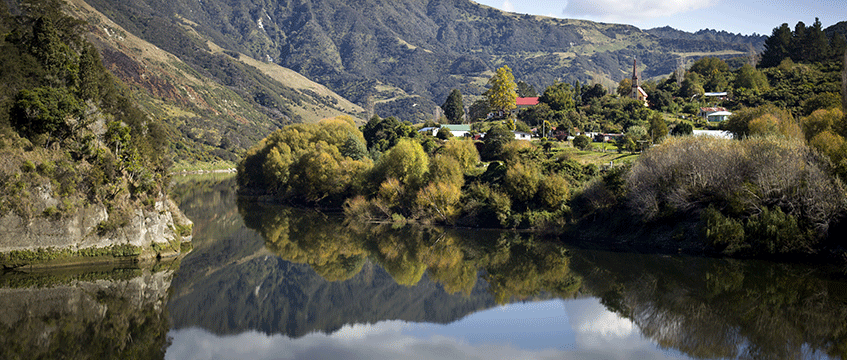Arup report urges industry to regenerate the planet
From a self-cooling building inspired by termite mounds to city planning aided by lessons learnt from slime mould, architects, planners and designers are showing how to work with, not against, nature in a new report.
Published by Arup today, Regenerative Design: Towards living in harmony with nature urges the built environment industry to learn from nature in order to move away from the “take, make, waste” mentality in order to keep the planet healthy enough to support life.
It provides guiding principles on how built environment professionals can use regenerative design and draws on lessons from nature as well as indigenous and traditional communities.
From a self-cooling building inspired by termite mounds to city planning aided by lessons learnt from slime mould, architects, planners and designers are showing how to work with, not against, nature in a new report.
Published by Arup today, Regenerative Design: Towards living in harmony with nature urges the built environment industry to learn from nature in order to move away from the “take, make, waste” mentality in order to keep the planet healthy enough to support life.
It provides guiding principles on how built environment professionals can use regenerative design and draws on lessons from nature as well as indigenous and traditional communities.
Currently a third of the world’s waste is produced by the built environment sector. With more than 100bn tonnes of raw materials extracted annually, the industry is a major contributor to biodiversity loss, resource depletion and carbon emissions.
Arup’s report aims to show built environment professionals practical steps they can take to break away from this cycle and begin to reverse ecological damage and regenerate planetary and social health.
Case studies showing examples of how this can be done include a building in Harare, Zimbabwe, which is designed like a termite mound to stay cool without air conditioning; and a facility in Saudi Arabia using algae and animals to clean wastewater. Another highlights how researchers are learning from how slime mould uses tubular networks to transport nutrients in the most optimal way possible. This in turn has applications in the design and planning of urban transport networks.
It calls for the industry to embed inclusive design and participatory democracy to “empower citizens to shape their spaces more actively”. This could be through “proactive use of technology, rather than meeting minimum regulatory standards,” such as accessible online voting. “When decision making is more inclusive and participatory, it results in more straightforward and efficient resolution of conflicting human-made and natural environment issues. This creates spaces that reflect the communities which inhabit them while also fostering native habitats.”
It also demonstrates how legislation can help rediscover the principles Indigenous and traditional communities have followed for millennia. For example, the Whanganui River in New Zealand has received legal recognition as a living entity, allowing action to be taken in court against those who harm it.
The report’s authors warn there is a massive challenge to reach the scale of change needed for the built environment industry to halt and reverse its negative impact on nature, and deliver positive outcomes for people and the planet.
Josef Hargrave, director for foresight at Arup, said: “Our industry is rightly focusing on climate action, but we are still giving too little attention to nature. The climate and nature crises are inextricably linked; we cannot solve one without addressing the other.
“It’s not enough to just reduce the resources we extract. We need to put nature at the heart of our designs and our lives.”
Arup is calling for all professionals involved in shaping the built environment to learn the guiding principles in the report, which are illustrated with innovative examples from around the world:
1. Nature-led: place-based design that enhances and emulates nature
The Eastgate shopping centre in Harare, Zimbabwe can maintain a comfortable temperature with no conventional air-conditioning or heating. Instead, designers mimicked the ways African termites use an intricate system of ventilation to keep their mounds cool, drawing in cool air at night to keep the building cool during hot days.
2. Systemic: using materials, resources and relationships that restore, protect and replenish
The Demolition Protocol in Singapore is ensuring materials from demolished buildings are recovered and reused. Concrete is now made using demolition waste and metals are being recovered using magnets and sieving techniques.
3. Equitable: co-creation and collaboration that ensure inclusivity and social justice
The Whanganui River in New Zealand (pictured) has received recognition as a living entity, allowing legal redress against those who damage it. The law also recognised the indigenous peoples as stewards of the land, demonstrating how an equitable approach can help protect a natural asset.
Image © Amos Chapple/Shutterstock











